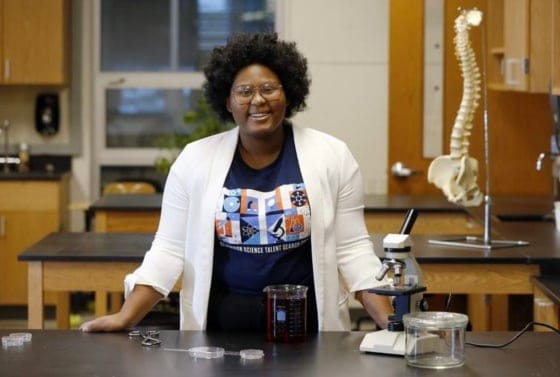
Recently the PBS News Hour featured an episode on the invention of color-changing sutures by a 17-year-old high school senior from the suburbs of Iowa City, Iowa. Dasia Taylor first developed the idea for her school science fair after reading an article that featured sutures that detect Surgical Site Infections (SSI) with the aid of a “smart device.” Dasia perceived this technology as unaffordable and therefore inaccessible to developing countries that would most benefit from it, so she sought out to create an affordable alternative.
Surgical site infections (SSI) are considered a “major cause for new illnesses, extended hospital stays, and even death” and they cost more than $3 billion annually in the United States alone. However, these statistics are far worse in developing and low-income countries, where 8% to 30% of procedures result in SSI.
In the interview, Dasia explains that during the early stages of infection, the skin’s natural acidity will decrease and cause a chemical imbalance that permits the infection to take hold. She further explains that beets are natural indicators of pH and change from their signature red to a purple-gray color when exposed to alkaline conditions. This application of a simple scientific concept allowed Dasia to develop her novel suture additive and granted her a spot in the finals of the prestigious Regeneron Science Talent Search.
While technical challenges must be overcome prior to making these sutures commercially available, for example, sterilization of the product, Dasia is dedicated to continuing the project. She believes that her invention will provide low-income countries with a viable weapon against SSI’s and will make a vast impact in surgical procedures worldwide.


Comentarios recientes